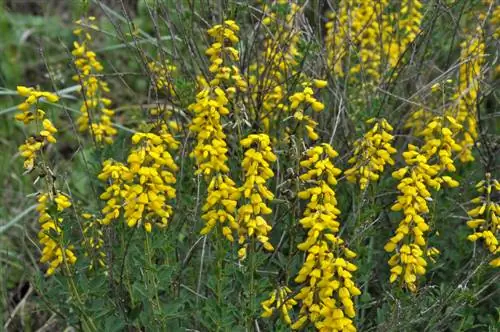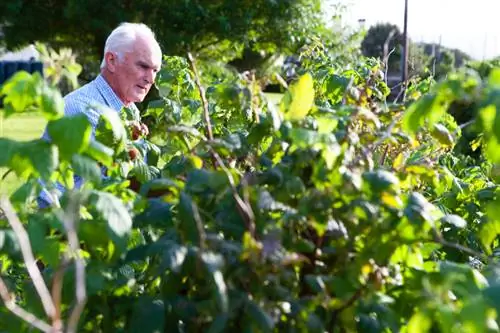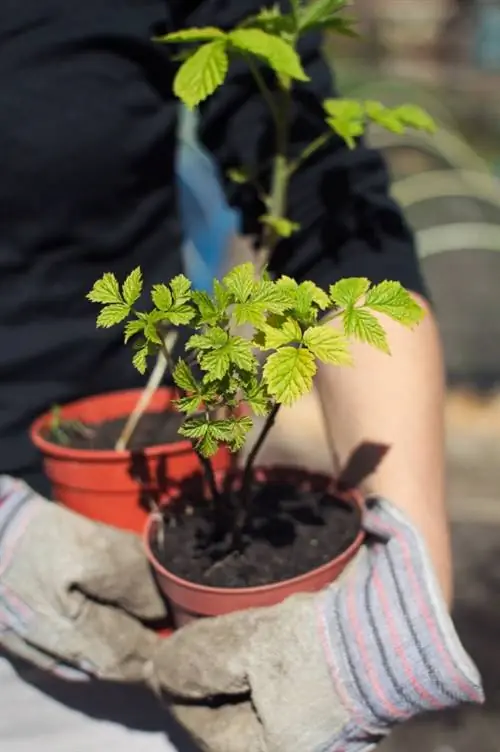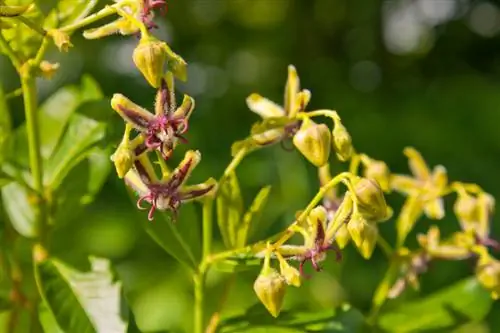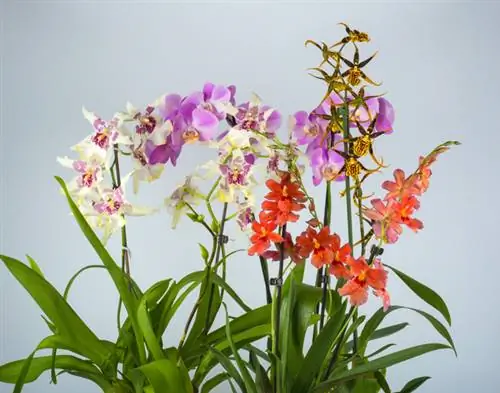- Author admin [email protected].
- Public 2023-12-16 16:46.
- Last modified 2025-06-01 06:02.
There are different types of gorse that are only slightly or not at all related to each other. The real gorse (bot. Genister) and the broom (Cytisus) are probably the most widespread in domestic gardens and require similar care.

How do I care for broom properly?
For optimal care, broom requires a sunny location, a slightly loose, rather lean and nutrient-poor soil. Watering is not necessary after planting and fertilizer should be avoided. Gorse is hardy and usually poisonous.
The choice of location and the ideal soil
Choosing the right location is very important for gorse, because it only blooms well in the sun. In the shade, flowers often fail to bloom and growth also leaves a lot to be desired. The gorse doesn't like being transplanted later.
Light, loose soil is ideal for gorse. It also thrives where it is too barren for many other plants. The wild form is often found in heathland landscapes. The gorse tolerates moisture in the soil and waterlogging less well than persistent drought.
Planting the gorse correctly
Over time, the gorse develops quite long taproots. These should not be bent when planting. Therefore, dig a sufficiently deep planting hole. Ideally, you should buy broom in a pot (€16.00 on Amazon) or container, where the sensitive roots are well protected.
Do I have to water and fertilize gorse?
After planting, you should water your gorse well; additional watering is usually not necessary later. It's best to avoid fertilizer altogether, as it can easily lead to your gorse growing but hardly flowering at all.
The gorse in winter
The gorse is considered to be well hardy and does not need any special care in the cold season. As a container plant, however, you should protect the root ball from excessively hard frost or, alternatively, overwinter in a cold greenhouse.
The most important things in brief:
- frugal and very easy to care for
- Location: as sunny as possible
- Soil: rather lean and poor in nutrients
- hardy
- poisonous
- Flower color: mostly yellow, but also white, pink, orange and red possible
- Flowering time: Genister - early summer (June), Cytisus - spring (April, May)
Tip
The broom is extremely easy to care for, but unfortunately it is also poisonous. You should consider this before purchasing and choose an appropriate location.

